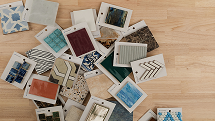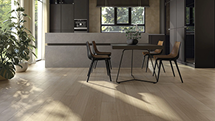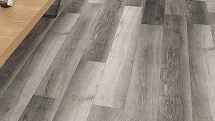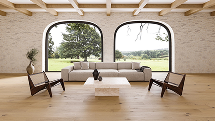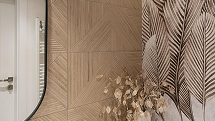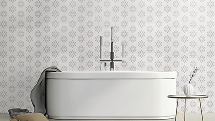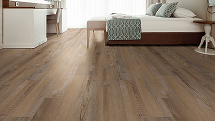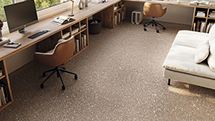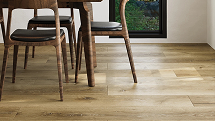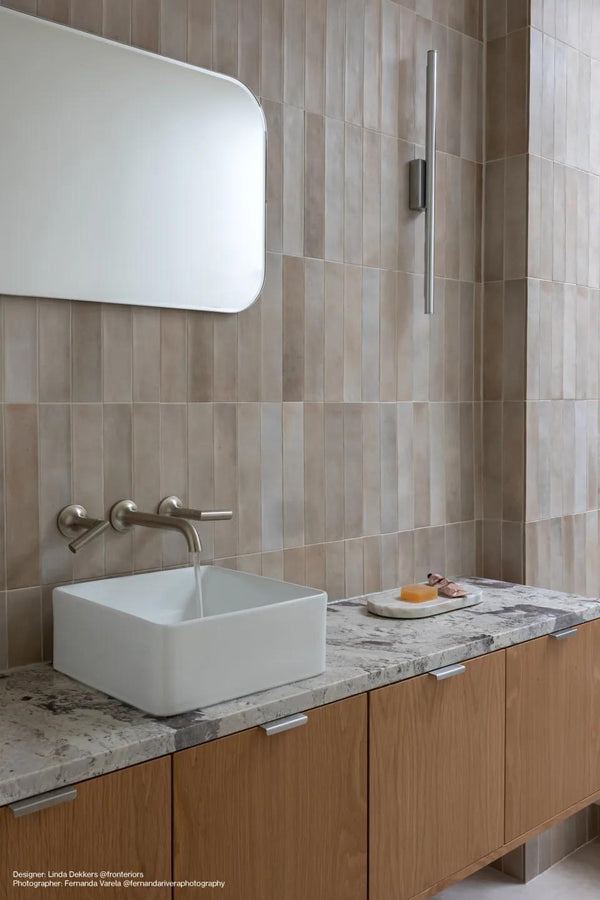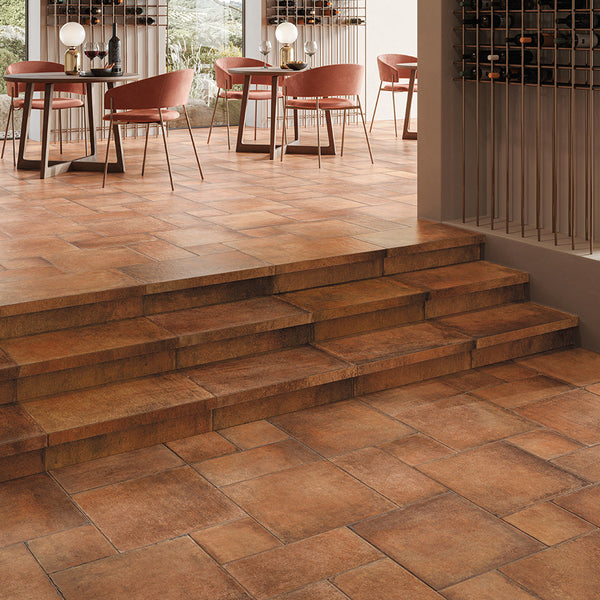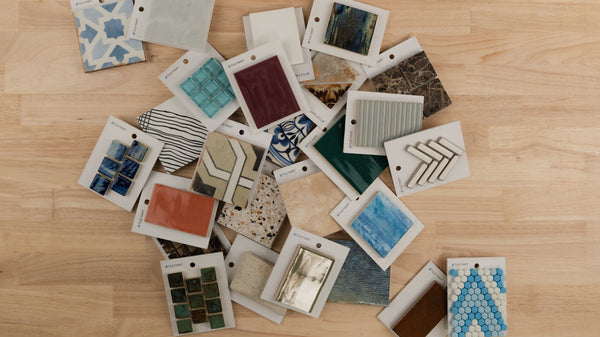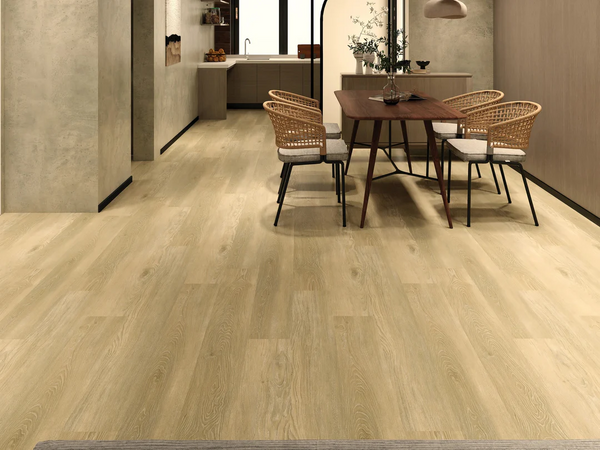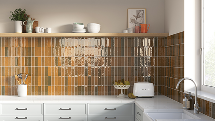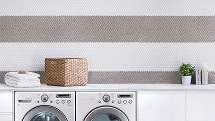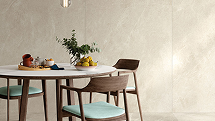Beginner's Guide to Mastering the Herringbone Pattern
Key Highlights
- The herringbone pattern boasts a timeless elegance, used for both flooring and decorative features.
- This pattern can be created with a variety of materials, including wood, tile, and natural stone.
- Mastering the herringbone pattern requires careful planning, measuring, and execution.
- Understanding the differences between chevron and herringbone patterns is crucial for achieving the desired look.
- Selecting durable materials suited for your space ensures a long-lasting and beautiful result.
Introduction
Incorporating a herringbone tile or a herringbone floor is a great way to make your home look beautiful. The pattern, which looks like the bones of a herring fish, adds interest to any room. Whether you are updating your kitchen, bathroom, or another area, this beginner's guide will give you the info you need. You will gain the knowledge and confidence to create a stunning herringbone pattern.
Understanding the Herringbone Pattern
The herringbone pattern is unique because of its zigzag design. It is made by putting rectangular tiles or planks at a 90-degree angle. This creates a V-shaped pattern that gives depth and movement to floors and walls. It has been loved for many years and does not go out of style. The herringbone pattern brings a classic beauty that fits many design styles.
It works well with both traditional and modern looks. The best part is that you can use different materials to make it. This lets you change how it looks to fit your style.
The History and Origin of the Herringbone Pattern
The herringbone pattern has a long history that goes back to the Roman Empire. It was used a lot for building roads because it is strong. Over time, this classic pattern has become popular in home design. It started as a floor pattern but is now also chosen for backsplashes and accent walls. The name comes from its look, which is similar to the skeleton of a herring fish. This is due to its unique V-shaped design. Today, many homeowners still love the herringbone pattern for its beautiful and timeless elegance.
Herringbone vs. Chevron: Spotting the Difference
Both herringbone and chevron patterns use a zigzag layout. But they are different in how the tiles are cut and put together. In the herringbone pattern, the tiles are rectangular. They are arranged in a broken zigzag design, which gives a staggered look. The chevron pattern, however, has tiles cut at an angle. These tiles are laid out to form a smooth and continuous zigzag. Knowing these differences can help you pick the right pattern for your space.
Materials for Crafting a Herringbone Pattern
When you create a herringbone pattern, you have many material choices. Each material gives a different look. You can choose from warm wood floor, shiny ceramic tile, or beautiful stone. Your decision should match your style and needs.
Besides how it looks, you should think about what the area will be used for and how much foot traffic it will get. For busy areas, durability is very important. Delicate materials can work well for accent walls or decoration.
Choosing Between Wood, Tile, and Stone
When choosing between wood, tile, and stone for your herringbone pattern, think about what you want. Wood gives warmth and natural charm. Tile is versatile and easy to clean. Stone adds a luxurious feel and is very durable. Wood floors can make any space look classic. If you pick tile, you will find many colors and styles to choose from. On the other hand, stone will give your home a high-end look, perfect for making your interior design special with the herringbone pattern.
Evaluating Material Durability and Aesthetics
When picking materials for herringbone patterns, you need to think about durability and how they look. Different materials like wood, tile, and natural stone each have their own strengths.
- Wood floors are warm and charming, but they need more care.
- Ceramic and porcelain tiles are strong and easy to clean, making them great for busy spaces.
- Natural stone, like marble, gives a luxurious feel but must be sealed to last longer.
It is important to find a good balance between how long the materials will last and how nice they look. This will help you create a beautiful and lasting herringbone pattern.
Preparing to Create Your Herringbone Pattern
Before you start laying your chosen material in the herringbone pattern, it’s important to prepare well. This means you should gather all the tools you need and measure your space accurately.
If you take the time to prepare, it will help make the installation smoother. It will also give you a nice, professional-looking result.
Tools and Supplies Needed
To begin your herringbone project, you need to collect some important tools. For cutting tiles, use a tile cutter and make sure you have spacers for even gaps. A laser level will help you keep things straight. You'll also need a trowel and mortar to set the tiles. If you are working on wooden herringbone floors, you'll require a miter saw, a tape measure, and some adhesive. For those choosing a stone herringbone pattern, a wet saw is necessary for cutting the natural stone correctly. Remember to wear safety gear like gloves and goggles. Having the right tools will help you install smoothly and make your work look professional.
Measuring Your Space Accurately
To make a perfect herringbone pattern, accurate measurements are very important. First, use a laser level to be precise and mark where you want to start. Next, find the centerline. This helps in placing the design evenly. Measure the width of the room and change your pattern if needed. Keep in mind that being accurate now will lead to a smooth herringbone layout. This will improve the look of your space. Learning this measurement process is essential for a successful herringbone installation.
Step-by-step Guide to Laying the Herringbone Pattern
Now that we've talked about the preparation, let's go to the guide for making your herringbone pattern. Each step is important. You need to plan the layout, make your cuts, and make sure the pieces fit together well.
By carefully following these steps, you can create a beautiful herringbone masterpiece.
Step 1: Planning Your Design Layout
Begin by imagining the area where you will put down the herringbone pattern. Look at how big and what shape the space is. Picture how the pattern will fit in with everything around it. Use tools like a laser level to make sure everything lines up correctly. Try different layouts using rectangular tiles to see which one looks the best. Don't forget to think about cuts and corners to keep a smooth flow. Pay attention to things like the width of the pattern and how it works with the room's decor to create a nice look.
Step 2: Cutting and Laying the First Few Pieces
To start using the herringbone pattern, first cut the tiles carefully if needed. Make sure to be precise. Use a trowel to spread the mortar diagonally on the surface. Begin by laying the tiles from the center, making sure they align to form the V-shape. Use tile spacers to keep even gaps for a neat look. Check the alignment with a laser level and adjust the tiles if needed. Once the tiles are in place, press them firmly into the mortar. Keep going with this method, piece by piece, until the area is covered as you want.
Conclusion
Mastering the herringbone pattern brings elegance to any room. It's important to know its history, materials, and how to create it. Whether you choose wood, tile, or stone, the durability and looks matter a lot. By using a step-by-step guide and careful measurements, you can lay this pattern easily. For a great choice of herringbone tiles, check out Tile Mart's products. Use this classic style to enhance your decor with a bit of timeless charm.
Tile Mart offers a wide range of herringbone pattern tiles!
Elevate your home with TileMart's great range of herringbone pattern tiles. We have many options for any style. You can choose from classic ceramic and porcelain or beautiful natural stone. Whether you want to update your kitchen backsplash, create a lovely bathroom floor, or add a nice touch to your living room, TileMart has the right herringbone pattern tile for you.
Discover our wide range of herringbone pattern tiles and bring your design ideas to life.
Frequently Asked Questions
What Is the Best Material for a Herringbone Pattern in High Traffic Areas?
Consider using strong materials, like porcelain tile or engineered hardwood, in high traffic areas. A herringbone pattern can add style. These materials last a long time and look great, making them perfect for busy places.
Can I Install a Herringbone Pattern Floor Myself?
Yes, you can put in a herringbone pattern floor by yourself. You just need the right tools and some good guidance. Start by planning the layout. Then, cut and lay the pieces correctly. Take some time to think about the materials you choose. Make sure they are good for durability and look nice.
How Do I Maintain My Herringbone Floor to Keep It Looking New?
To keep your herringbone floor looking new, you should regularly sweep or vacuum to get rid of dirt. Use a damp mop with a mild cleaner. Make sure not to use too much water. Clean up spills right away. You might also want to use a protective sealant. Check your floor now and then for any wear and reapply sealant if needed.
Is the Herringbone Pattern Suitable for Small Rooms?
Yes, the herringbone pattern is good for small rooms. Its diagonal layout creates the feeling of a bigger space. This design adds visual interest and makes a room seem more spacious. It also brings a touch of elegance.
How Can I Incorporate the Herringbone Pattern in My Home Decor?
Adding the herringbone pattern to your home decor can bring elegance and style. You can use it in wood flooring, tile backsplashes, or even in textiles, like throw pillows and rugs. This classic pattern will make your space look more charming and attractive.

